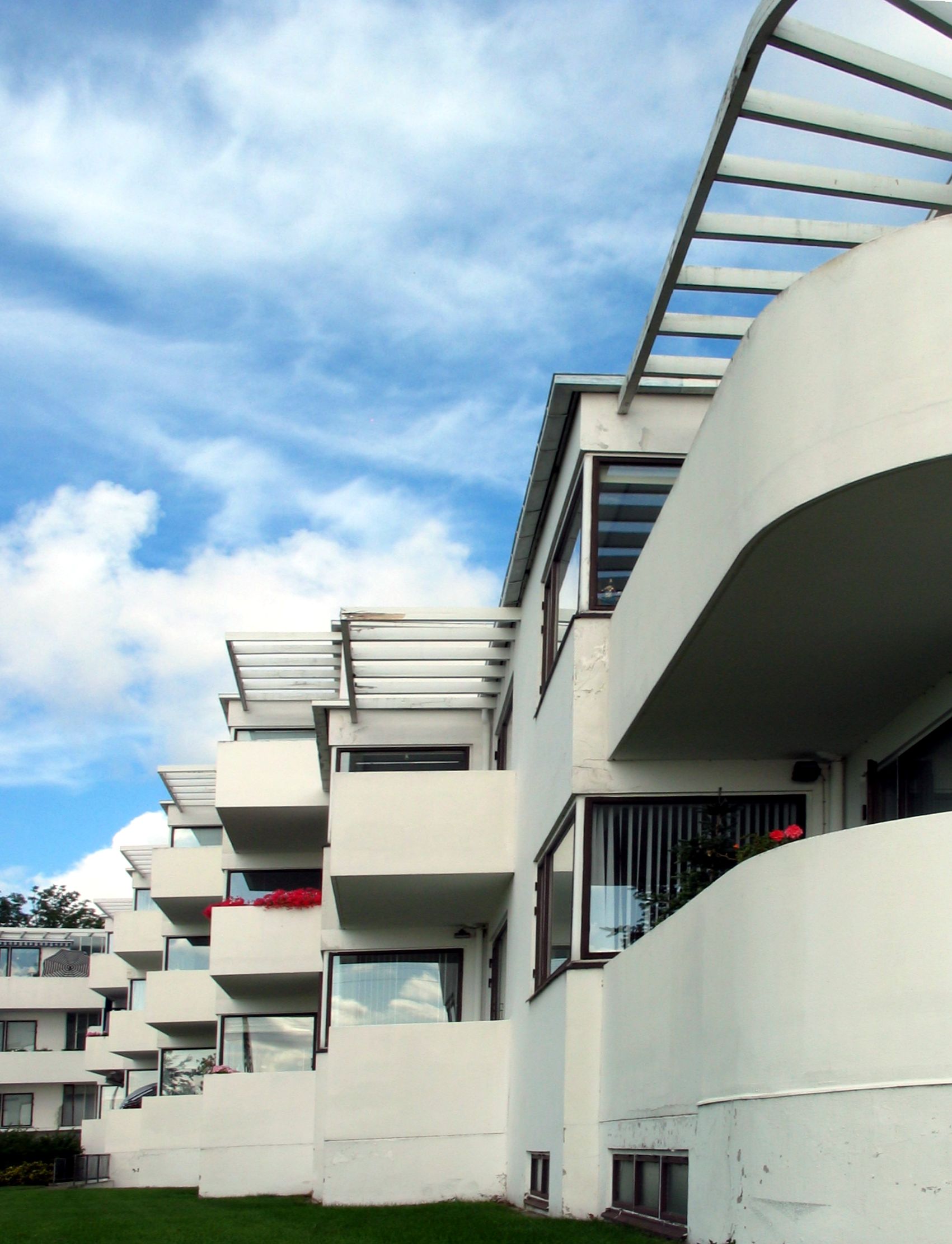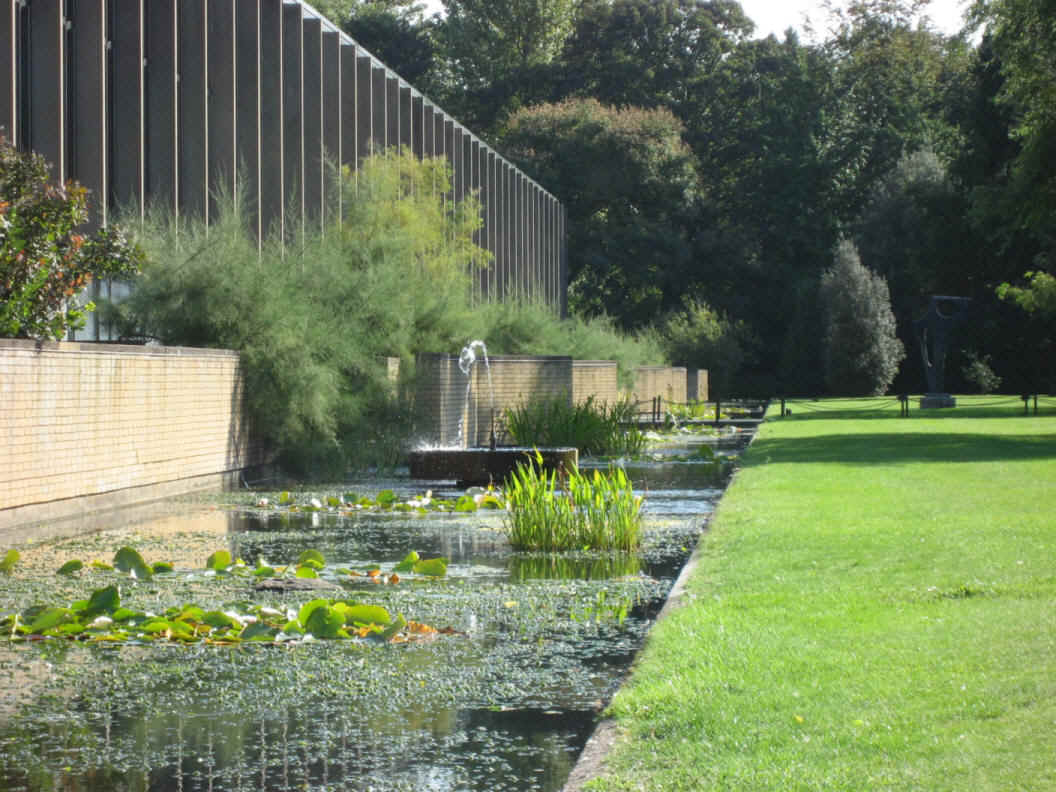|
Klampenborg
Klampenborg is a northern suburb of Copenhagen, Denmark. It is located in Gentofte Municipality, Gentofte municipality, directly on Øresund, between Taarbæk and Skovshoved. Like other neighbourhoods along the Øresund coast, Klampenborg is an affluent area with many large houses. Landmarks Klampenborg is known for a cluster of building projects by the Functionalism (architecture), functionalist Danish architect Arne Jacobsen. These include Bellevue Beach, the Bellavista housing estate and the Bellevue Teatret, Bellevue Theatre, all completed between 1932 and 1936 as some of the earliest Danish examples of Modernism. Klampenborg is the main gateway to the extensive Jægersborg Jægersborg Dyrehave, Deer Park, one of the most popular green areas in greater Copenhagen, known for its large deer population, the Hermitage Hunting Lodge, Hermitage Royal Hunting Lodge and ancient oak trees. The entrance, one of many, is adjacent to Klampenborg Station and is marked by a red-painted wo ... [...More Info...] [...Related Items...] OR: [Wikipedia] [Google] [Baidu] |
Klampenborg Racecourse
Klampenborg Racecourse ( Danish: Klampenborg Galopbane) is a flat horse racing track in Klampenborg in the northern suburbs of Copenhagen, Denmark. History The first organized horse races in Denmark were held in Copenhagen in 1770 at the initiative of the British born queen Caroline Mathilde. Regular horse races took places at Copenahgen's Nørre Fælled from the 1820s. The races were moved to the Hermitage Plain in Jægersborg Dyrehave in 1870. The first race there took place on 15 June. Klampenborg Racetracks (then Klampenborg Væddeløbsbane) was inaugurated in 1910. It was owned by the Association for the Promotion of the Noble Horse Breeding (Foreningen til den Ædle Hesteavls Fremme). It is believed that the tribune was moved from the Exposition Universelle in Paris in 1906. Racecourse The racecourse is located adjacent to Jægersborg Dyrehave. The racecourse is circa 2.400 m long. A new tribune designed by Dissing + Weitling was inaugurated in 2000. Major events Major ... [...More Info...] [...Related Items...] OR: [Wikipedia] [Google] [Baidu] |
Taarbæk
Taarbæk is a neighbourhood in Lyngby-Taarbæk Municipality. The neighbourhood covers approximately 0.5 km2, located between Jægersborg Dyrehave and Øresund. The population is estimated to ca. 1700 residents. Traditionally, Taarbæk was a fishing village but, nowadays, the village is inhabited by people from the middle or upper class. Taarbæk is named after a former village called Torsbæk, which was located just north of where Taarbæk is today. The giant container ship Emma Mærsk is home-ported in Taarbæk. Despite its small size, Taarbæk has its own school, church, port, tennis club, water skiing club and football club. The water skiing club is among the best in Denmark. The football club Taarbæk IF, is one of the oldest football clubs in Denmark, founded on August 23, 1908. History Taarbæk was established as a fishing village in the 17th century. It was originally called Thorsbæk, meaning Thor's Stream, a reference to a local stream. The village had no harbor, ... [...More Info...] [...Related Items...] OR: [Wikipedia] [Google] [Baidu] |
Bellavista Housing Estate
The Bellavista housing estate designed by Arne Jacobsen is the clearest example of Bauhaus architecture in Denmark. Completed in 1934, the estate is located just north of Copenhagen, in Klampenborg, Gentofte Municipality, next to Jacobsen's Bellevue Beach, which had been completed a couple of years earlier."Bella Vista og Bellevue (1937)" ''Dansk Arkitektur Center''. Retrieved 21 October 2011. Background While still a student, Jacobsen travelled to Germany where he was attracted by the architecture of and |
Arne Jacobsen
Arne Emil Jacobsen, Honorary Fellowship of the American Institute of Architects, Hon. FAIA (; 11 February 1902 – 24 March 1971) was a Danish architect and furniture designer. He is remembered for his contribution to functionalism (architecture), architectural functionalism and for the worldwide success he enjoyed with simple well-designed chairs. Biography Early life and education Arne Jacobsen was born on 11 February 1902 in Copenhagen. His father Johan was a wholesale trader in safety pins and snap fasteners. His mother Pouline was a bank teller whose hobby was floral motifs. He is of Jews, Jewish descent. He first hoped to become a painter, but was dissuaded by his mother, who encouraged him to opt instead for the more secure domain of architecture. After a spell as an apprentice mason, Jacobsen was admitted to the Architecture School at the Royal Danish Academy of Fine Arts where from 1924 to 1927 he studied under Kay Fisker and Kaj Gottlob, both leading architects and ... [...More Info...] [...Related Items...] OR: [Wikipedia] [Google] [Baidu] |
Sølyst, Klampenborg
Sølyst is a former country house located just near the Øresund coast in Klampenborg, Gentofte Municipality, on the northern edge of Copenhagen, Denmark. It now houses the Royal Copenhagen Shooting Society. History First owners The first Sølyst, then spelled ''Zeelust'', was built by a merchant called Julius Frøichen. It was half-timbered and stood 11 bays long. In 1725, it was bought by another merchant, Just Fabritius, who also owned the nearby Rococo mansion Christiansholm, which he had built in 1746. He replaced the house with a new building in 1760. A cultural venue In 1776 the property was acquired by Ernst Heinrich von Schimmelmann, a central civil servant in the financial administration and later Minister of Financial Affairs, who used it as his summer residence. The year before he had married Countess Emilie Rantzau but she died of tuberculosis just five years later when only 28 years old. He remarried in 1782 and with his new wife Charlotte, continued to spend ... [...More Info...] [...Related Items...] OR: [Wikipedia] [Google] [Baidu] |
Bellevue Teatret
The Bellevue Teatret ( English: Bellevue Theatre) is a theatre in Klampenborg at the northern outskirts of Copenhagen, Denmark. Opened in 1936 to the design of Arne Jacobsen, the building is considered one of his most important architectural works and exemplar of Danish functionalism. The theatre is part of a scheme also including the adjoining Bellevue Beach and residential block and was, at the time, seen as a manifestation of "the dream of the modern lifestyle". History In the early 1930s, Arne Jacobsen won a competition for a masterplan for the Bellevue area in Klampenborg, Gentofte Municipality, shortly after opening his own architectural office in 1930. The Bellevue Teatret was the last stage of this scheme, which also included facilities for the local Bellevue Sea Bath and the Bellavista residential buildings. The theatre opened in 1936 as a mondain summer theatre. It closed a few seasons later, then operating as a cinema until 1980, when it was reopened as a theatre an ... [...More Info...] [...Related Items...] OR: [Wikipedia] [Google] [Baidu] |
Copenhagen
Copenhagen ( ) is the capital and most populous city of Denmark, with a population of 1.4 million in the Urban area of Copenhagen, urban area. The city is situated on the islands of Zealand and Amager, separated from Malmö, Sweden, by the Øresund strait. The Øresund Bridge connects the two cities by rail and road. Originally a Vikings, Viking fishing village established in the 10th century in the vicinity of what is now Gammel Strand, Copenhagen became the capital of Denmark in the early 15th century. During the 16th century, the city served as the ''de facto'' capital of the Kalmar Union and the seat of the Union's monarchy, which governed most of the modern-day Nordic countries, Nordic region as part of a Danish confederation with Sweden and Norway. The city flourished as the cultural and economic centre of Scandinavia during the Renaissance. By the 17th century, it had become a regional centre of power, serving as the heart of the Danish government and Military history ... [...More Info...] [...Related Items...] OR: [Wikipedia] [Google] [Baidu] |
Dyrehavsbakken
(), commonly referred to as (, to distinguish it from Dyrehaven, a royal deer park with public access) is an amusement park in Lyngby-Taarbæk, Denmark, near Klampenborg and approximately north of central Copenhagen. It is located in the southern part of Dyrehaven, around away from a public transport connection to the center of Copenhagen (Klampenborg S-train Station). It opened in and is the world's oldest operating amusement park. With 2.5–2.9 million visitors per year, it is the second most popular attraction in Denmark, after the more widely known Tivoli Gardens amusement park. Access to the area is free, and admissions are purchased separately for the individual attractions, unlike Tivoli. History The origins of Dyrehavsbakken can be traced back to 1583 when Kirsten Piil discovered a natural spring in what is now known as Jægersborg Dyrehave or Dyrehaven, a large forest park north of Copenhagen. Residents of Copenhagen were attracted to the spring water du ... [...More Info...] [...Related Items...] OR: [Wikipedia] [Google] [Baidu] |
Hvidøre
Hvidøre House (Danish language, Danish: Hvidøre) is a former country house at Klampenborg, just south of Bellevue Beach, on the Øresund coast north of Copenhagen, Denmark. It is most known for serving as the home of Dowager Empress Maria Feodorovna (Dagmar of Denmark), Maria Feodorovna of Russia, daughter of King Christian IX of Denmark, Christian IX and mother of the last emperor of Russia, Nicholas II of Russia, Nicholas II, after she was exiled by the Russian Revolution (1917), Russian Revolution of 1917. It now serves as a conference and training venue for the Novo Nordisk, Novo Group. History Origins At the beginning of the 16th century, King John, King of Denmark, John of Denmark built a royal residence at Hvidøre, guarding the only landing place to the north of Copenhagen. King Christian II of Denmark, Christian II used it for his mistress and her mother after his marriage to Princess Isabella of Austria, Elisabeth of Habsburg in 1515. Bruun and the new building Hvid� ... [...More Info...] [...Related Items...] OR: [Wikipedia] [Google] [Baidu] |
Bellevue Beach
Bellevue Beach (), often simply referred to as Bellevue, is a beach at Klampenborg on the northern outskirts of Copenhagen, Denmark. With up to 500,000 visitors a year, it is one of the most popular beaches in the Copenhagen area, although it attracts somewhat fewer Copenhageners since the inauguration of the Amager Beach Park and the Copenhagen Harbour Baths in 2005. Bellevue is a 700-metre-long sandy beach with adjoining lawns. The characteristic blue-striped, almost cartoonish, lifeguard towers and the geometric kiosks were designed by Danish architect and furniture designer Arne Jacobsen in 1932. History In the 1930s, when the right to vacation became legally mandated, Denmark's coastline became the country's most popular holiday destination. Gentofte Municipality made plans to develop a piece of coastline north of Copenhagen into a seaside resort complex combining an existing park designed by the landscape architect C.Th. Sørensen with beach facilities catering to som ... [...More Info...] [...Related Items...] OR: [Wikipedia] [Google] [Baidu] |
Skovshoved
Skovshoved is a former fishing village on the Øresund coast north of Copenhagen, Denmark. The area is part of Charlottenlund postal district and Gentofte Municipality. Local landmarks include Skovshoved Church, Skovshoved Hotel and the listed Arne Jacobsen-designed Skovshoved Petrol Station from 1938. History The first known reference to Skovshoved (''Scogshouet'') is from 1275. It was originally a small fishing village with just a few houses. An inn, Skovshoved Kro, opened in the village in 1660. In 1620 it obtained status of royal privileged inn, enabling it to brew its own beer. Skovshoved was known for its fish wives, ''Skovserkoner'', who would carry the day's catch in caskets on their back to the fish market at Gammel Strand in Copenhagen. The first harbor was built in 1869. In the middle of the 19th century, Skovshoved, like the other fishing villages along the Øresund coast, began to attract summer visitors from Copenhagen. Some visitors stayed at the inn while other ... [...More Info...] [...Related Items...] OR: [Wikipedia] [Google] [Baidu] |



